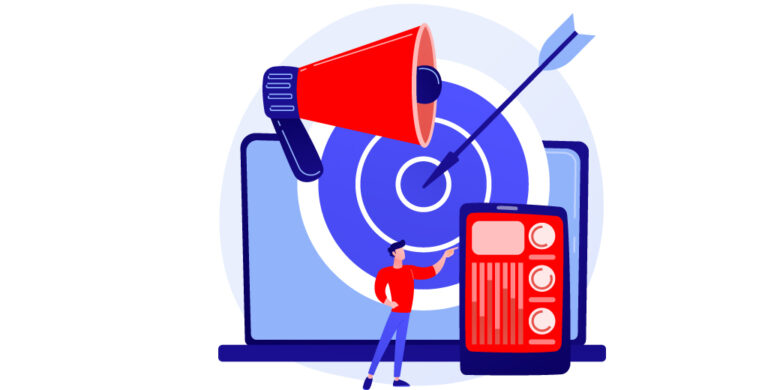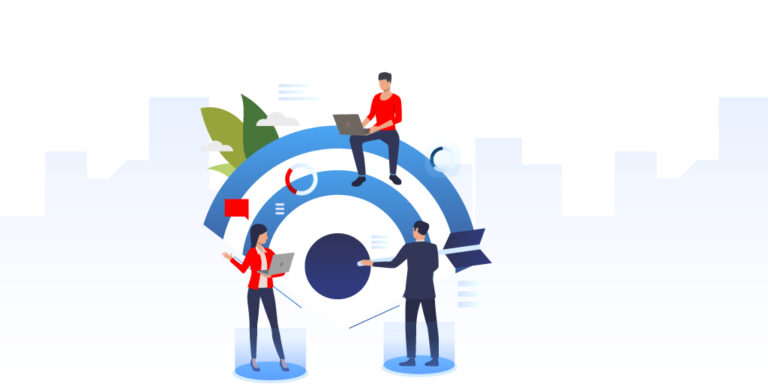
How to Drive Foot Traffic with Targeted Marketing
Attracting customers requires more than just good product and services. Targeted marketing strategies can boost sales, engage customers and build loyalty. Lets explore effective strategies to drive traffic with targeted marketing approaches.
Drive Foot Traffic with Targeted Marketing
The key to drawing in foot traffic is knowing your target audience and designing campaigns that resonate with their needs. Businesses can reach the right audiences at the right time with the help of tools like WiFi marketing , geo-targeted ads and loyalty programs. Lets look into these strategies.
1. Instore Promotions
In-store promotions are a time-tested yet potent approach to engage your customers and and drive them to your location. Offer limited time discounts, exclusive new product reveals, and limited sales to attract customers. Promote these offers using geo-targeted ads to draw nearby customers and drive a boost in visits.
2. Retargeting Ads to Engage Customers
Not every first-time visitor becomes a paying customer. However, retargeting ads offer a powerful way to reengage those who have previously interacted with your brand. By leveraging platforms like Google Ads or Facebook, you can effectively reconnect with your target customer segment and entice them with personalized offers that are tailored to their interests and preferences.
3. Utilize Loyalty Programs to Engage Customers
An effective loyalty program not only secures repeat business but also cultivates strong customer allegiance. Offer members enticing rewards such as points, exclusive discounts, or first dibs on sales. Further incentivize sign-ups by providing attractive in-store perks for joining.
4. Role of Targeted Marketing in Increasing Foot Traffic
Implementing strategies that drive traffic with targeted marketing is crucial for drawing customers to your business. Here’s an overview of their effectiveness:
- Reach the Right Audience: With tools like geo-targeted ads, you can really hone in on nearby customers or your target audience. Craft messages that play up the convenience and perks of your location.
- Customer Engagement with Relevant Offers: Personalized deals and discounts really click with your target audience. Creating tailored offers will create more customer engagement and boost your conversion rates.
- Leveraging Location Based Marketing: Location-based tools like WiFi Marketing and GPS ads let you notify nearby customers about deals or events at your store; generating real-time engagement and a better shot at getting walk-ins.
- Building Customer Loyalty:Earning your customers’ trust and consistently providing value are key to building a loyal customer base. Engaging audiences can create a base of returning customers. Loyal customers visit often and refer others to your business.

Is Targeted Marketing Ethical?
Targeted marketing can be ethical when done transparently and responsibly, despite concerns over customer data use. Businesses can use anonymized customer data to come up with campaigns that really speak to their audience’s needs and wants. For example, location-based ads can let folks know about special in-store deals without violating their privacy. The key is getting consent and keeping data secure – that’s how you drive traffic with targeted marketing in an ethical way

Segmentation In Targeted Marketing
Segmenting your target audience is crucial to drive traffic with targeted marketing. By breaking down your customers into distinct groups, you can craft personalized messages that attract more in-store traffic and keep people coming back. Let’s take a closer look at the five main types of segmentation.
1. Demographic Segmentation
Demographic segmentation focuses on factors like age, gender, income, education, and occupation. For example, a boutique could use WiFi marketing to offer customized discounts to young professionals visiting the area. Adjusting your messaging to target demographic profiles ensures your marketing resonates with the right customers.
2. Geographic Segmentation
Targeting customers based on their location is an effective way to drive foot traffic through geo-targeted ads. Whether you’re promoting a pop-up event or a new store opening, location-based targeting ensures your message reaches nearby customers.
3. Psychographic Segmentation
Psychographic segmentation explores customer lifestyles, interests, and values. Understanding your audience’s motivations allows creating campaigns that connect emotionally. For instance, a health food store can target fitness fans with offers on organic snacks or protein shakes.
4. Behavioural Segmentation
Analyzing customer actions, like buying history, loyalty, and product use, is behavioral segmentation. For example, a coffee shop could use loyalty data to give exclusive deals to regular customers. Tailoring your approach to customer behavior boosts both visits and repeat business.
5. Firmographic Segmentation
Firmographic segmentation is for B2B businesses. It involves targeting companies based on factors like industry, size, or revenue. For example, an office supplies store could offer exclusive bulk purchase deals to local small businesses. This ensures reaching the right B2B customers.
Benefits of Segmentation in Targeted Marketing
Segementation when marketing for a targeted audience can prove to be beneficial in many ways.
1. Improve Engagement
By tailoring your marketing to a specific audience, you craft a more relevant message. From geo-targeted ads to campaigns targeting particular customer segments, personalized outreach grabs attention and drives customer engagement. The outcome? Greater foot traffic as customers feel seen and valued.
2. Increased Resource Efficiency
Targeted marketing strategies allow you to focus on your specific audiences, ensuring resources are allocated effectively. By using tools like WiFi marketing and customer analytics, you can minimize unnecessary expenses while maximizing your ROI.
3. Increased Relevance
Relevance is crucial for successful campaigns. By segmenting your market, you can craft tailored messages that deeply resonate with your audience. For example, a café could use geo-targeted ads to promote special offers to nearby customers, making the communication highly relevant and timely. This boosts sales and encourages spontaneous visits.
4. Better Targeted Digital Advertisment
Platforms like social media and search engines let you create focused campaigns. Segmentation based on age, interests, location, and buying habits ensures your ads reach the right people. Imagine using WiFi marketing to offer discounts to nearby shoppers or creating ads that engage customers during their commute.
5. Increased Customer Loyalty
Personalized marketing shows customers you value them as individuals. By addressing their needs and preferences, you build trust and loyalty. Tools like Markitar make it easier to send targeted messages, ensuring loyal customers receive offers they care about, driving repeat visits and foot traffic.
Conclusion
Building customer loyalty starts with understanding your target audience and crafting campaigns that meet their needs. Utilize geo-targeted ads, WiFi Marketing, and loyalty programs to effectively engage customers . Personalized offers and targeted strategies will drive more visitors, higher engagement, and increased sales. Take the first step today—evaluate your current approach, implement targeted tactics, and watch your business succeed.
FAQ's
Building customer loyalty starts by understanding your target customers. Offer personal experiences, regular contact, and rewards for repeat visits. Use tools like Markitar to send tailored messages or special offers to your most loyal customers, showing they matter.
Segmentation divides a market into groups based on demographics, behaviors, or preferences. Targeting focuses on specific segments. Positioning creates a message that appeals to your target audience. These strategies ensure effective customer engagement.
Get to know your customers by looking at their info like age, what they buy, and where they’re from. Use tools like customer surveys or WiFi analytics to find trends. When you know who your customers are, you can create marketing that speaks to them, which will get more people coming into your business.
Markitar has advanced tools to create targeted ads, send personalized texts, and do email marketing to keep your business in customers’ minds. These features let you interact with customers in real-time and get them to your store with timely deals and offers.
Yes, you can segment your audience on Markitar. Use location, interests, past purchases, and more to divide them up. This makes your marketing messages relevant, which boosts engagement and gets people to visit your business. It helps you bring in customers with targeted ads.


